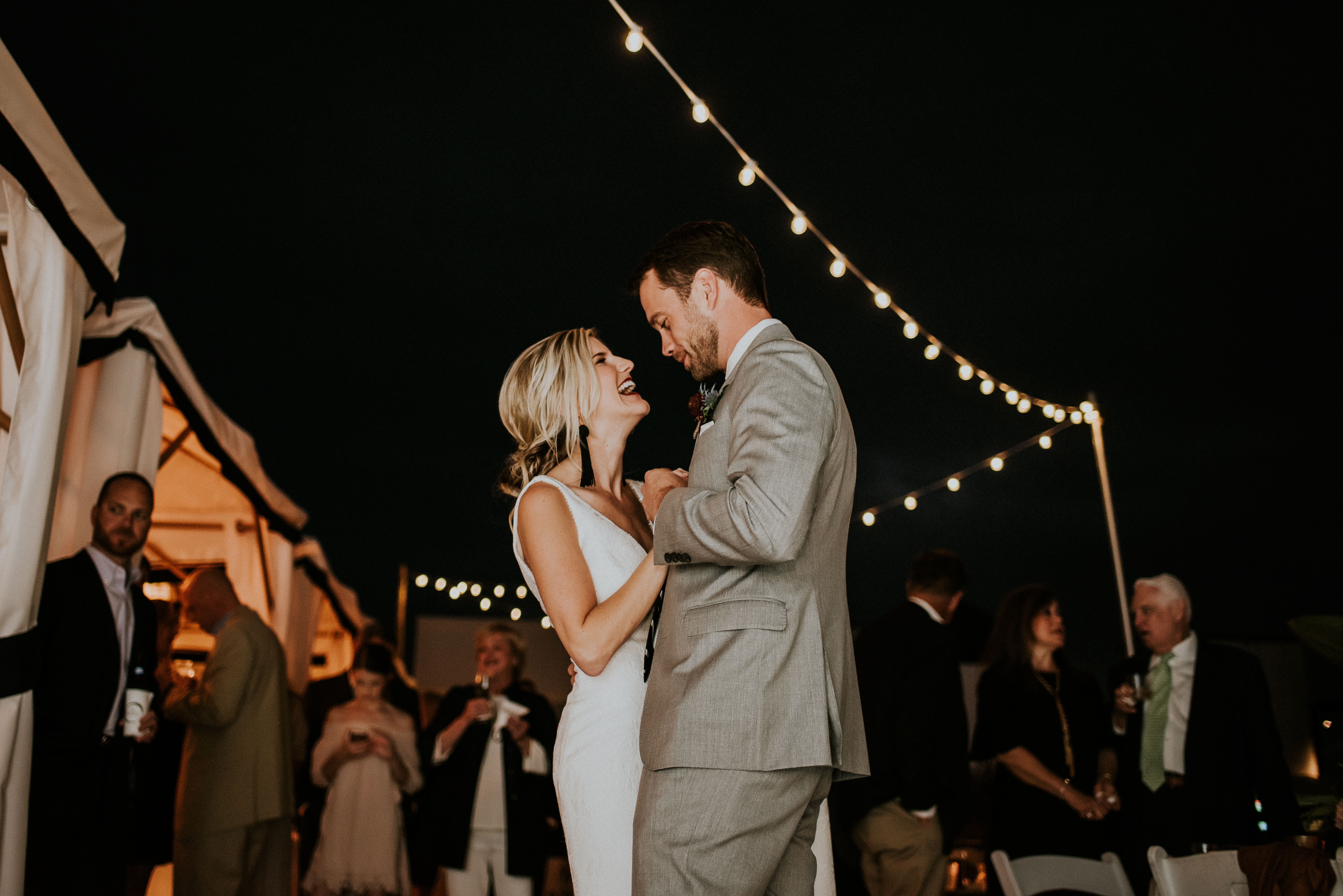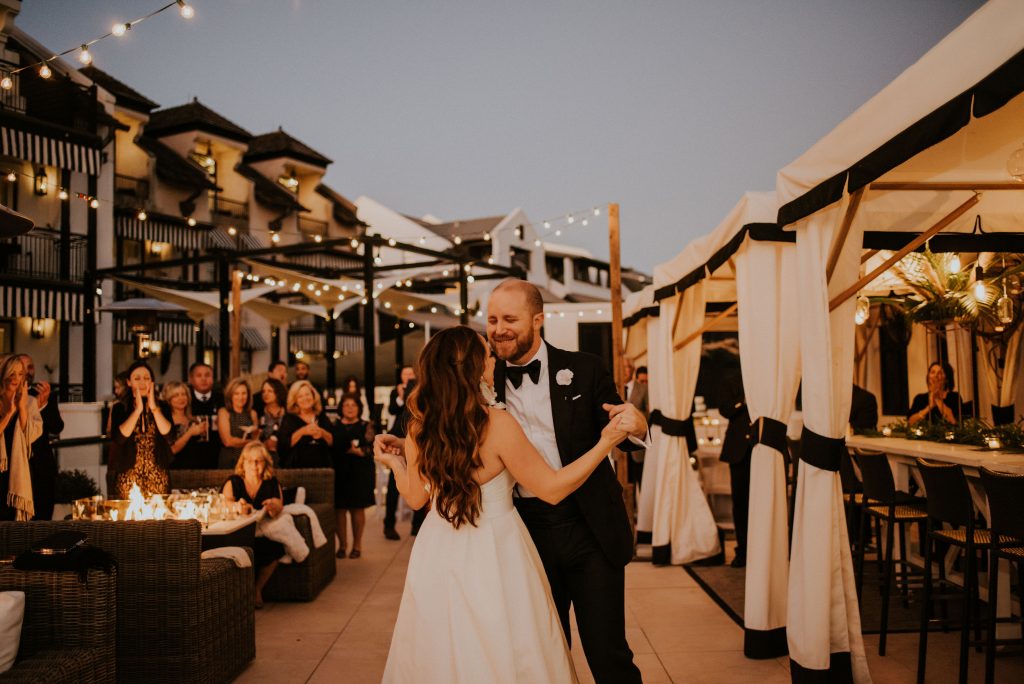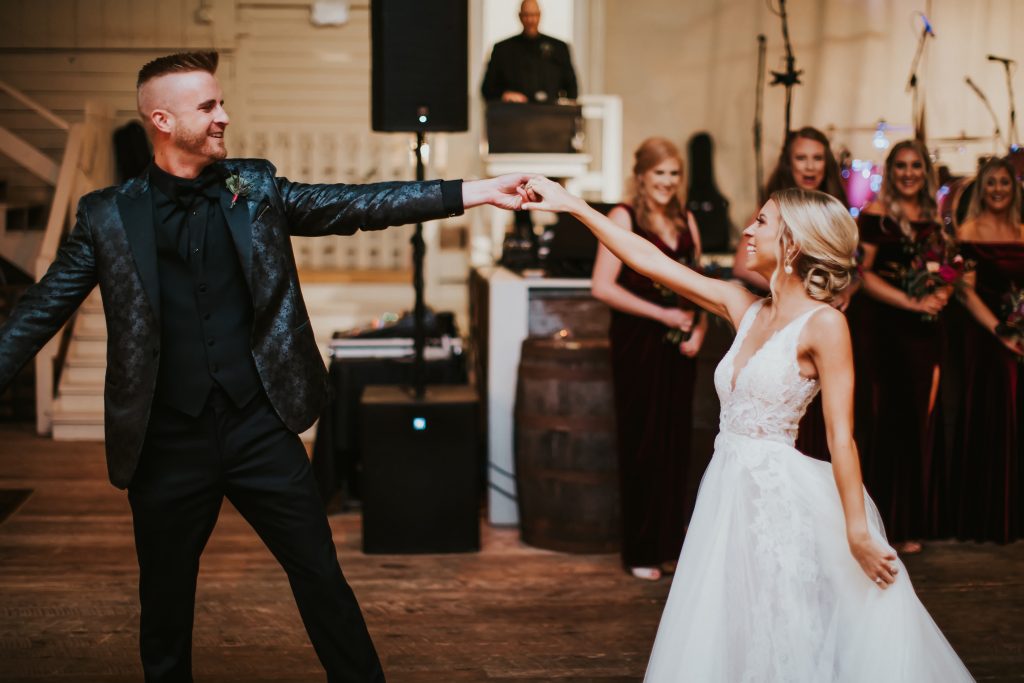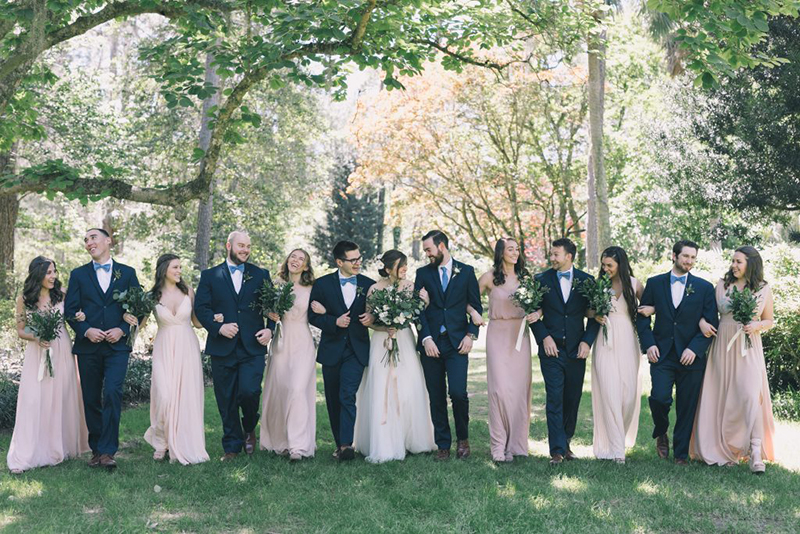A Guide to Wedding Dances
By Rebecca Padgett Frett
Whether you’re a dancing queen or have two left feet, dancing will make its way into your wedding. But no matter your skill level, dancing should be enjoyed by all.
A lot of anticipation and even unnecessary pressure can be placed on dances, especially the first as a couple. Follow our lead with these tips that will help you plan the dance that’s right for you as a couple.
1. Do or Don’t?
First and foremost, decide if dances are something you want to incorporate into your wedding reception. It’s your wedding — do what you want, not what people have come to expect. Some couples and attendees often look forward to these dances. In general, there are four main dances that are common at weddings — the first dance as a couple, the parent’s dance, the anniversary dance and the money dance. The first dance is as it states, the couple’s first married dance together. The parent’s dance typically occurs between the bride and her father, then the groom and his mother. This can be catered to fit the parent figure in your life.
The anniversary dance is a way to honor either the couple in attendance that’s been married longest or any couple that has been married over a certain span of years. Lastly, the money dance is an opportunity for any attendee to dance with the bride or groom by gifting them with money, meant to symbolize the start of a prosperous life together. Other dances may include dances specific to cultures and religions. Knowing these dance options, determine if any, all or some of these are right for your wedding.
2. Music Matters
Music is a language in itself as it can evoke so many emotions and memories. Typically, couples select a song that is meaningful to them, whether it describes their relationship or holds significance based on a moment they shared together. The same goes for the parent’s dances. Take some time to really think about the music you decide to dance to; it will forever remind you of your wedding day.
If you are struggling to find a song, there are a multitude of lists out there detailing popular wedding and love songs. For a first dance, you should aim for around 3 minutes of music, anything more might disengage your audience. If your song is long, talk with your music provider about either cutting the song or fading it out. Parent dances and anniversary dances can be shorter if you would like, and a money dance could be longer. Regardless, the sweet spot for all is 3 minutes or less.
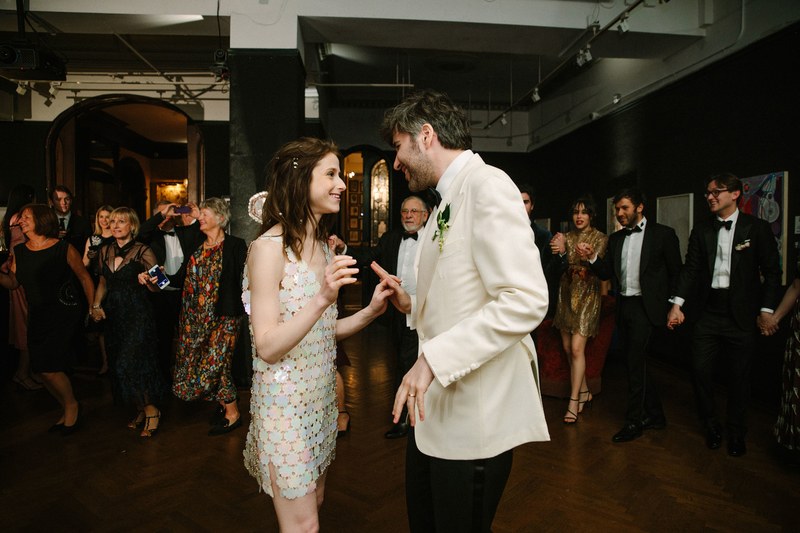
3. Learn the Steps
Once you’ve selected your music, you can start thinking of what you would like for your dance. Consider the tempo of the music. Will it be more faced past like a salsa or fox trot or slower with a waltz or swaying? Many couples use this as an opportunity to take dance lessons together. This is a fun way to not only impress your guests but also bond together during the wedding planning process. If you seek out lessons, I suggest doing so two to three months before your wedding. For my wedding, we were our own choreographers. Between my dance background and watching a few YouTube videos, my husband and I came up with our own choreography.
We had a ton of fun laughing and learning together as we pushed away furniture to make a dance floor in our living room. For some people, choreography is great as a guide and gives you something to focus on. For others, it’s daunting. Don’t feel pressured to choreograph a dance if it’s not what you envision for that special moment. It’s up to you if you decide to choreograph a dance with your parents. Regardless, you should give them a heads up of what to expect.
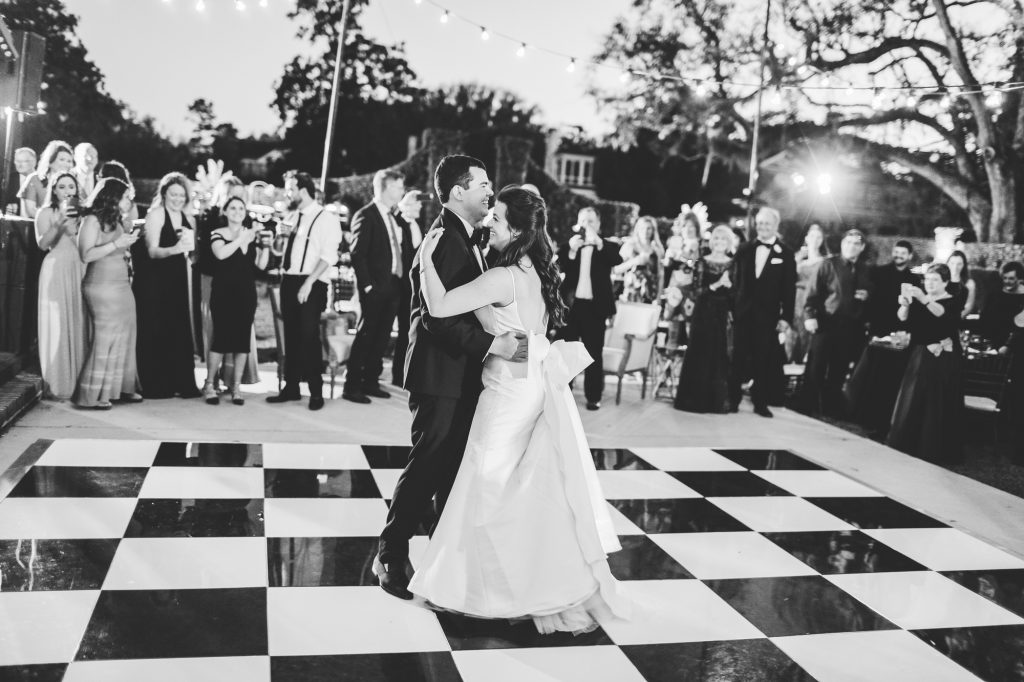
4. Practice Makes Perfect
If you do decide to choreograph a dance, practice it. This will ensure you feel confident and are less likely to forget the moves. Any time that planning becomes particularly stressful, stop what you’re doing, grab your partner and dance it out. Practice makes perfect, but at the same time don’t overdo it. You don’t want to become tired of your song before the wedding even happens.
5. Dress the Part
Put on your dancing shoes! Really, you might decide you want to change shoes depending on how involved your dance is. Ensure your shoes aren’t slick and that they are comfortable to move around in. It’s also wise to bustle your dress to avoid any tripping hazards. Consider the size of your dress if you’re incorporating any lifts or moves where it might get in the way. If you’re changing from ceremony to reception into completely different outfits, this would be the optimal time to do so.
6. Alternatives
If you decide the pressure of all eyes on you is too much, there are other alternatives to a first dance. Instead, you could learn a dance as a bridal party. This is still fun and puts some spotlight on you as a couple. You could surprise and delight with a flash mob experience. If dancing is completely out, play a game instead. The “shoe game” is popular. That’s where an attendee asks questions of the couple, and they raise a shoe or other item to indicate their answer.
7. Dance for You
Dance like nobody is watching may be a cliché, but during your first dance, it’s helpful advice. Your first dance as a couple is one of the moments during your wedding day where you have the time to look into each other’s eyes and be close to one another in an uninterrupted way.

